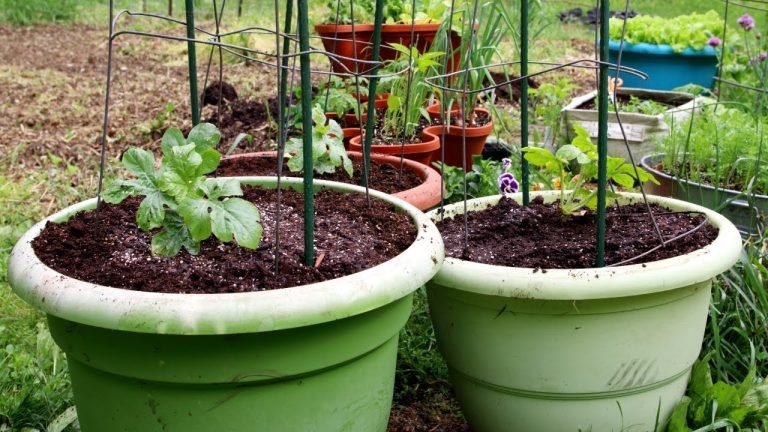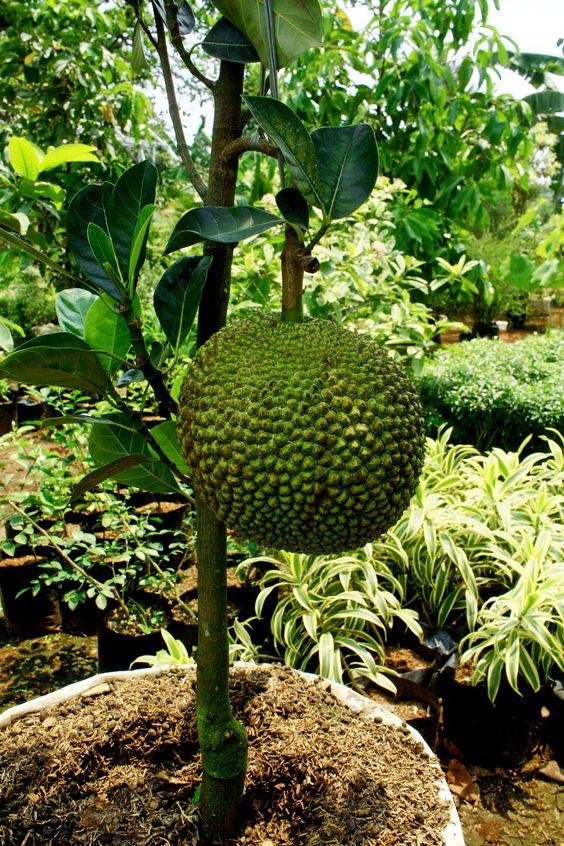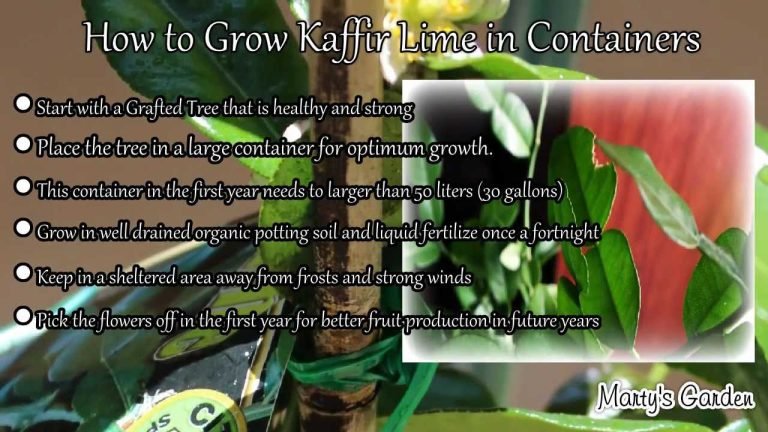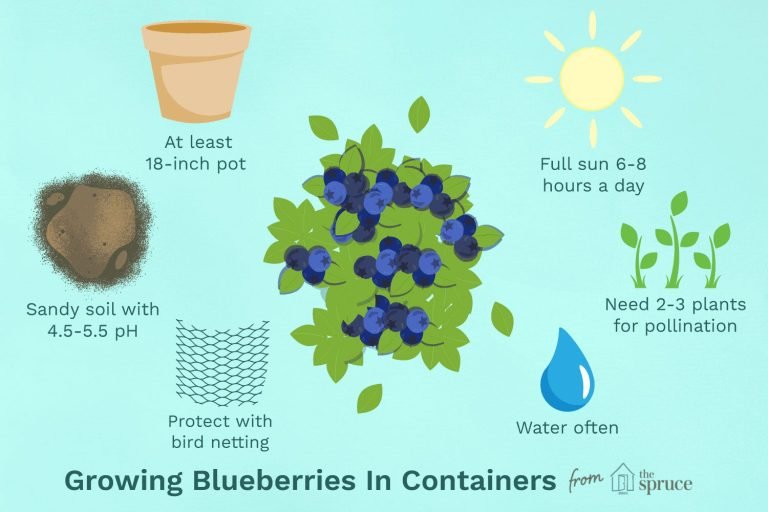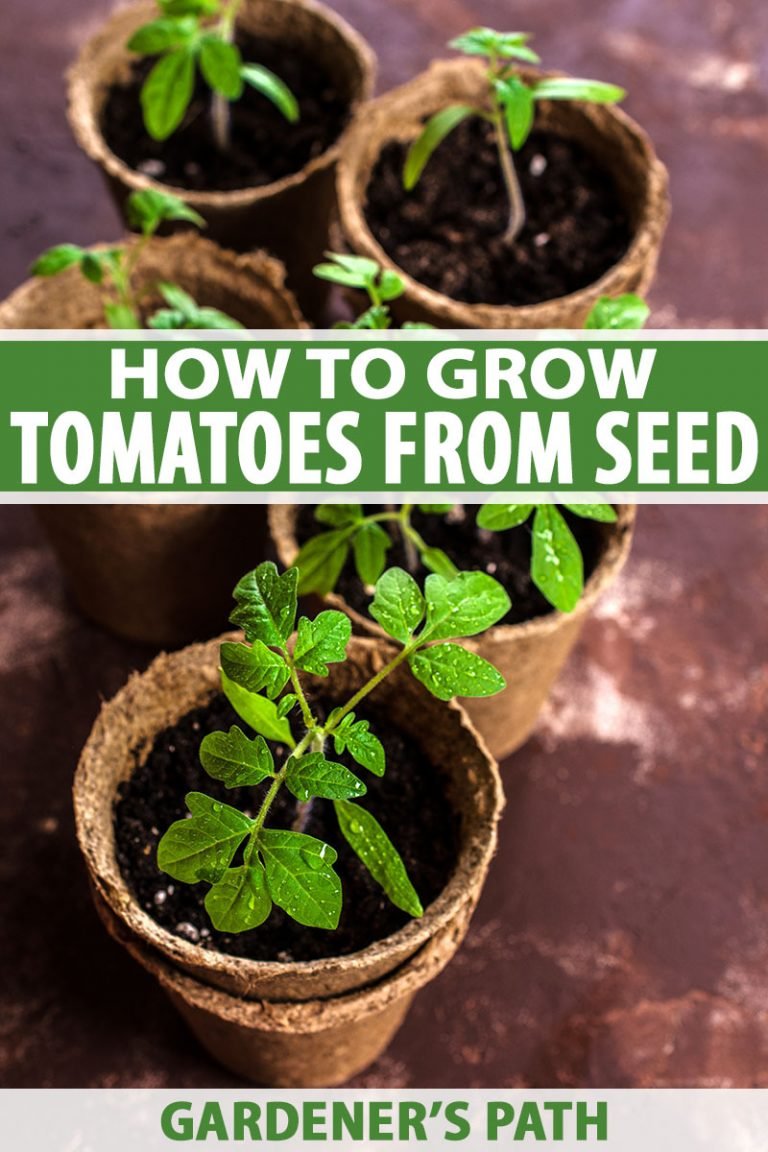how to grow cucumbers in a pot – [Beginners Guide]
Hello there! Are you looking for a fun and easy way to grow your own cucumbers at home? Well, you’re in luck! Growing cucumbers in pots is a great idea for a number of reasons. First of all, it’s a space-saving solution. If you have a small backyard or balcony, pots are the perfect way to grow cucumbers without taking up too much room. Plus, it’s easy to move the pots around to ensure that the cucumbers get plenty of sunlight.
Another benefit of growing cucumbers in pots is that it’s easy to control the soil quality. When you grow cucumbers in the ground, it can be difficult to ensure that the soil is just right. But with pots, you can use high-quality potting soil and add any necessary fertilizers to ensure that your cucumbers have the nutrients they need to thrive.
Furthermore, it’s easy to control the environment when you grow cucumbers in pots. You can move the pots indoors if the weather turns too hot or cold, and you can also protect the cucumbers from pests and diseases more easily. Additionally, you can use trellis or support to train the cucumber to grow up, which is especially great if you are looking to grow more cucumbers in a small space.
Finally, growing cucumbers in pots is a great way to get the whole family involved in gardening. Children love to watch plants grow and cucumbers are fast growing , it’s a great way to teach them about where their food comes from and the importance of taking care of the environment. And you’ll get to enjoy fresh, homegrown cucumbers all summer long!
In short, growing cucumbers in pots is a great idea for anyone looking to grow their own food in a small space, have control over the soil and environment, and involve the whole family in the process. So, give it a try and enjoy the taste of fresh cucumbers in the comfort of your home.
Pot or container selection
When it comes to growing cucumbers in pots, the size and construction of the pot are important factors to consider for optimal growth.
First and foremost, the pot should have a minimum capacity of at least 5 gallons for a single cucumber plant. This will provide enough space for the roots to grow and for the soil to retain moisture. If you’re looking to grow more than one cucumber plant, you’ll need to use multiple pots or a larger container with a capacity of at least 10 gallons.
The pot construction should also be taken into consideration. A pot with drainage holes is essential to prevent water from pooling at the bottom of the pot and causing root rot. Additionally, the pot should be made from a durable material such as terracotta, wood, or plastic that can withstand the elements and last for multiple growing seasons.
It’s also a good idea to choose a light-colored pot if possible as it will help to reflect light back onto the plant and keep the soil cooler, which can be beneficial for cucumbers that are sensitive to heat.
In summary, when growing cucumbers in pots, it’s important to use a pot with a minimum capacity of 5 gallons per plant, with drainage holes, made of durable material and ideally a light-colored pot. This will provide the optimal conditions for your cucumber to thrive and grow.
Make suitable soil mix
When it comes to growing cucumbers in pots, the type and mixture of soil used is essential for optimal growth.
First and foremost, it’s important to use high-quality potting soil that is specifically formulated for container gardening. This type of soil is designed to provide the right balance of nutrients and moisture retention for plants grown in pots.
In terms of composition, it’s important to use soil that is well-draining to prevent water from pooling at the bottom of the pot and causing root rot. A good soil mix for cucumbers should contain a mixture of peat moss, vermiculite or perlite, and compost or aged manure to provide the right balance of nutrients and drainage.
It’s also important to note that cucumbers prefer a slightly acidic soil with a pH between 6.0 and 6.8. Before planting, you can test the pH of your soil mix with a pH test kit and adjust it as needed with lime or sulfur.
Additionally, you can amend the soil with slow-release fertilizer or add organic matter such as compost or well-aged manure to provide additional nutrients throughout the growing season.
In summary, when growing cucumbers in pots, it’s important to use high-quality potting soil that is well-draining, slightly acidic with a pH between 6.0 and 6.8, and amend with slow-release fertilizer or organic matter to ensure optimal growth and nutrient availability.
How to plant the cucumbers?
Step 1: Choose a Pot
Select a pot that is at least 12 inches deep and 12 inches wide. This will provide enough space for the cucumber plant to grow and spread its roots. Make sure the pot has drainage holes at the bottom.
Step 2: Fill the Pot with Soil
Fill the pot with a high-quality potting soil that is well-draining. You can also mix in some compost or aged manure to add extra nutrients to the soil.
Step 3: Sow the Seeds
Sow the cucumber seeds in the soil, planting them about 1/2 inch deep. Space the seeds about 4-6 inches apart.
Step 4: Water the Seeds
Gently water the seeds after planting, being careful not to wash them away. Keep the soil consistently moist until the seeds germinate.
Step 5: Place the Pot in a Sunny Location
Place the pot in a sunny location that receives at least 6 hours of direct sunlight per day. If you don’t have an outdoor spot that gets enough sunlight, you can also use a grow light to supplement the light.
Step 6: Care for the Seedlings
Once the seedlings have sprouted, continue to keep the soil consistently moist and provide them with plenty of sunlight. As the plants grow, you may need to stake them or provide a trellis for support.
Step 7: Harvest the Cucumbers
Cucumbers will be ready to harvest in about 50-70 days after planting. They should be firm and dark green when they’re ready to pick. Keep an eye out for yellowing leaves or wilting plants, which can indicate pest or disease issues.
Note:
Keep the pot well-drained, avoiding waterlogged soil.
Provide enough water to the plant regularly.
Fertilize the plant every 2-3 weeks with a balanced water-soluble fertilizer.
Pest and disease control measures may be necessary
How to care for cucumbers?
Watering Requirement
When it comes to watering cucumbers in pots, it’s important to keep the soil consistently moist but not waterlogged. Here are a few tips to ensure that your cucumbers receive the right amount of water:
- Check the soil moisture level regularly and water when the top inch of soil is dry.
- Water deeply to encourage strong root growth. A good rule of thumb is to water the soil until it’s evenly moist.
- Avoid watering the leaves of the cucumber plant as this can lead to fungal issues.
- If you live in a hot climate, you may need to water your cucumbers more frequently.
Fertilizer Requirement
Cucumbers are heavy feeders and will benefit from regular fertilization. Here are a few tips to ensure that your cucumbers receive the right amount of nutrients:
- Before planting, mix a slow-release fertilizer into the soil according to the package instructions.
- During the growing season, you can feed your cucumbers every 3-4 weeks with a water-soluble fertilizer at half strength.
- You can also amend the soil with compost or aged manure to provide additional nutrients throughout the growing season.
Sunlight Needs
Cucumbers need plenty of sunlight to thrive, here are a few tips to ensure that your cucumbers receive the right amount of sunlight:
- Place your cucumber plants in an area that receives at least 6 hours of direct sunlight per day.
- If you live in a hot climate, you may need to provide some shade for your cucumbers during the hottest part of the day.
- You can also rotate the pot every few days to ensure that all sides of the plant receive an equal amount of sunlight.
Pruning & Training
Cucumbers benefit from regular pruning and training to ensure that they grow healthy and produce a high yield of fruits. Here are a few tips to ensure that your cucumbers receive the right amount of pruning and training:
- Remove any yellow or damaged leaves from the plant regularly to encourage healthy growth.
- As the cucumber plant grows, you can use a trellis or support to train the plant to grow up, which allows for more efficient use of space and makes it easier to harvest the cucumbers.
- Remove any side shoots that appear along the main stem of the plant as these will divert energy away from the main cucumber fruits.
Other Care
Cucumbers also need other care to ensure that they grow healthy and produce a high yield of fruits. Here are a few tips to ensure that your cucumbers receive the right amount of care:
- Keep an eye out for pests and diseases and take action immediately if you notice any issues. Common cucumber pests include aphids, cucumber beetles, and powdery mildew. You can control pests by using a strong stream of water to knock them off the plants or by using an insecticidal soap or neem oil.
- Cucumbers also benefit from consistent humidity levels. If the air in your home is particularly dry, you can place a tray of water near the plants to increase the humidity levels around them.
- Cucumbers are heavy fruit bearing plant, ensure to provide proper support to the plant as it develops fruits, as they can become too heavy for the plant to support on its own and can cause the plant to wilt or break.
By following these tips, you’ll be well on your way to growing healthy and productive cucumber plants in pots. Remember to be patient, as it takes time for cucumber plants to mature and produce fruits. Happy gardening!
Common problems
Pests and Insects
One of the most common problems faced by cucumber plants grown in pots is the presence of pests and insects. These can cause damage to the leaves, stems, and fruits of the plant, leading to reduced yields and poor growth.
- Aphids are tiny, soft-bodied insects that suck the sap from the leaves, stems, and fruits of the plant. They are usually green, yellow, or black in color and can be controlled by using a strong stream of water or an insecticidal soap or neem oil.
- Cucumber beetles are small, yellowish-green beetles that can cause damage to the leaves, stems, and fruits of the plant. They can be controlled by using insecticidal soap or neem oil.
- Squash bugs are also common pests that can damage the leaves, stems, and fruits of the plant. They can be controlled by using insecticidal soap or neem oil or by handpicking and destroying the bugs.
Diseases
Another common problem faced by cucumber plants grown in pots is the presence of diseases. These can cause damage to the leaves, stems, and fruits of the plant, leading to reduced yields and poor growth.
- Powdery mildew is a fungal disease that causes a white, powdery coating on the leaves, stems, and fruits of the plant. It can be controlled by providing good air circulation, avoiding overhead watering, and using a fungicide.
- Downy mildew is another fungal disease that causes yellow or brown spots on the leaves and a white, downy growth on the undersides of the leaves. It can be controlled by providing good air circulation, avoiding overhead watering, and using a fungicide.
Poor Production
Another common problem faced by cucumber plants grown in pots is poor production. This can happen due to a variety of reasons such as:
- Insufficient sunlight: Cucumber plants need at least 6 hours of direct sunlight per day to thrive. If they are not getting enough light, they will not produce as many fruits.
- Insufficient fertilization: Cucumber plants are heavy feeders and require regular fertilization to produce a high yield of fruits. If they are not getting enough nutrients, they will not produce as many fruits.
- Overcrowding: Cucumber plants need plenty of space to grow and produce fruits. If they are overcrowded, they will not produce as many fruits.
- Incorrect temperature: Cucumber plants prefer temperatures between 60 and 75 degrees Fahrenheit. If the temperature is too hot or too cold, they will not produce as many fruits.
By identifying and addressing these common problems, you can help your cucumber plants to grow healthy and productive. Remember to check your plants regularly for signs of pests, diseases, and poor production, and take action as needed. Happy gardening!
Harvesting & storing homegrown cucumbers
When to harvest
When it comes to harvesting cucumbers, timing is everything. Here are a few tips to help you know when your cucumbers are ready to be picked:
- Check the size of the cucumber. Cucumbers are typically ready to be picked when they reach their full size, which can vary depending on the variety.
- Look for color change. Cucumbers should be a dark green color when they are ready to be picked. If the cucumber has started to yellow, it’s past its prime and should be picked.
- Check the texture. Cucumbers should be firm and slightly glossy when they are ready to be picked. If the skin appears dull or is easily punctured, it’s not ready to be picked yet.
How to harvest
When it comes to harvesting cucumbers, it’s important to be gentle to avoid damaging the plant or other cucumbers that are still growing.
- Use sharp scissors or pruning shears to cut the cucumber from the stem, leaving a small piece of stem attached to the cucumber.
- Be careful not to damage other cucumbers or the stem of the plant when harvesting.
- If you notice any cucumbers that are overripe or damaged, remove them from the plant as soon as possible to prevent the spread of disease or pests.
How to store
When it comes to storing cucumbers, it’s important to keep them cool and dry to maintain their freshness and flavor.
- Store cucumbers in a cool, dry place such as a refrigerator set to between 45 and 50 degrees Fahrenheit.
- If you have too many cucumbers to eat at once, you can store them in a plastic bag in the refrigerator for up to a week.
- Wrap the cucumbers in paper towel to absorb excess moisture and prevent them from becoming slimy.
By following these tips, you can ensure that your homegrown cucumbers are harvested and stored at the right time for maximum freshness and flavor. Remember to check your plants regularly for signs of ripeness, and be gentle when harvesting to avoid damaging the plant or other cucumbers. Happy harvesting!
Growing cucumbers in container – Conclusion
Growing cucumbers in pots is a great way to enjoy fresh, homegrown cucumbers right from your own backyard. With the right care and attention, cucumbers can thrive in pots and produce a high yield of fruits.
To ensure that your cucumbers grow healthy and productive, it’s important to:
- Use a pot with a minimum capacity of 5 gallons per plant, with drainage holes, made of durable material and ideally a light-colored pot.
- Use high-quality potting soil that is well-draining, slightly acidic with a pH between 6.0 and 6.8, and amend with slow-release fertilizer or organic matter to ensure optimal growth and nutrient availability.
- Provide at least 6 hours of direct sunlight per day, keep the soil consistently moist and fertilize regularly.
- Pruning & training, and keep an eye out for pests and diseases and take action immediately if you notice any issues.
By following these tips, you’ll be well on your way to growing healthy and productive cucumber plants in pots. Remember to be patient, as it takes time for cucumber plants to mature and produce fruits. Additionally, when it comes to harvesting and storing, timing is everything. Make sure to harvest cucumbers at the right time and store them in a cool and dry place to maintain freshness and flavor.
With all this information in mind, we encourage you to give growing cucumbers in pots a try. With a little bit of care and attention, you’ll be able to enjoy fresh, homegrown cucumbers all season long. Happy gardening!



